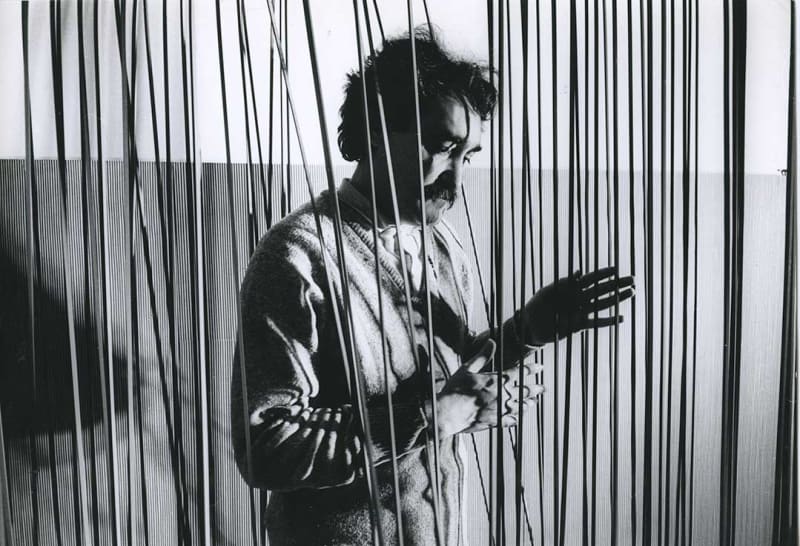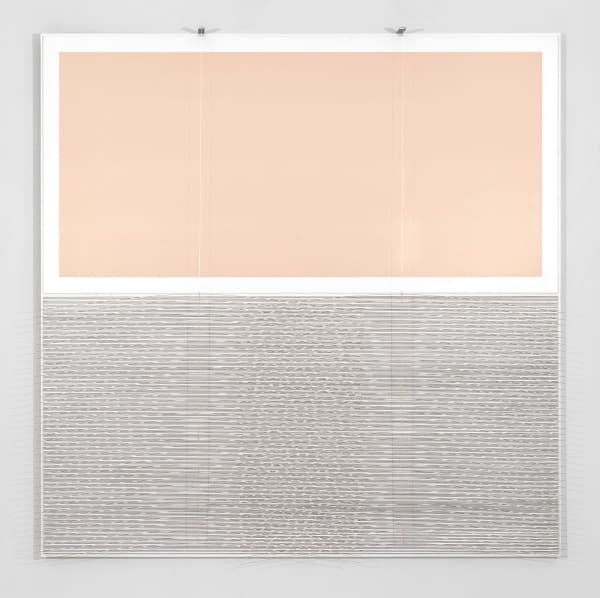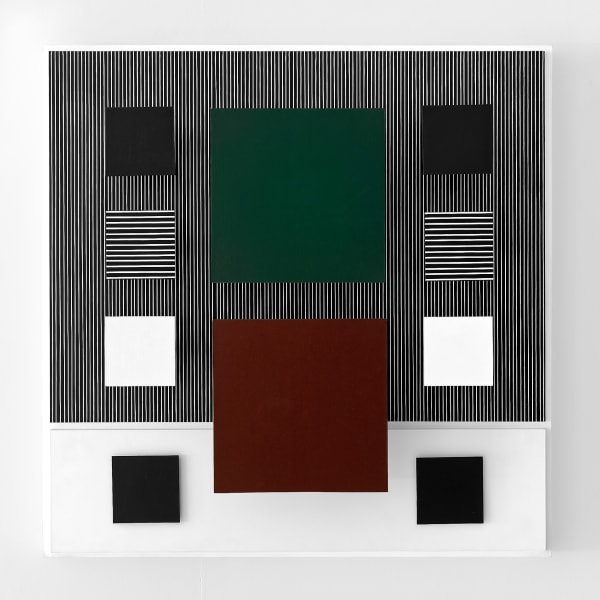One of the most important kinetic artists of the 20th century, Jesús Rafael Soto began his artistic career at a very young age, painting posters for movie theaters in his hometown of Ciudad Bolívar. In 1942, he received a scholarship to study art and art history at the Escuela de Artes Plásticas y Artes Aplicadas de Caracas, where he met fellow students Carlos Cruz-Diez, Mercedes Pardo, Omar Carreño, and Alejandro Otero. During these studies, he began making paintings inflected with Cubism.
Influenced by serialism in modern music, Soto embarked upon his “serial works” in 1952. In an interview conducted by Hans Ulrich Obrist in 2006, Soto recalled the importance of music to his early production. His interest in music was also as a musician; for more than a decade, Soto earned his living by playing guitar at bars.
Soto was also influenced by the work of artists Piet Mondrian and Kazimir Malevich, especially in their treatment of geometry and abstraction. Wassily Kandinsky’s text Concerning the Spiritual in Art (1912) was an important resource for the young artist as he began making works which suggested movement and instability. In 1947, when László Moholy-Nagy’s book Vision in Motion was published, Soto found another resource to support his ideas about movement and the spectator. By the 1960s, he was immersed in projects in which he used almost no color but instead explored the vibrations created by line and its dematerialization through the inclusion of hanging elements. He also began exploring the idea of haptic art: making works to be touched by the viewer.
Soto’s works have been shown in many important solo exhibitions, including Soto dans le collection du Musée, Centre Pompidou, Paris, France (2013); Peintures Cinétiques de Soto, Galerie Aujourd’hui, Palais des Beaux-Arts, Brussels, Belgium (1957); Soto. The Fourth Dimension, Guggenheim Bilbao, Spain (2019); Jesús Rafael Soto, Kaohsiung Museum of Fine Arts, Kaohsiung, Taiwan (2000); Soto, Musée d’Art Moderne de la Ville de Paris, France (1969); Soto – une Rétrospective, Musée Soulages, Rodez, France (2015); Soto – Cuarenta Años de Creación, Museo de Arte Contemporáneo de Caracas (MACC), Venezuela (1983); Jesús Rafael Soto, Museo Nacional de Bellas Artes, Buenos Aires, Argentina (1998); Visión en Movimiento, Museo Tamayo, Mexico City, Mexico (2005); Soto: Houston Penetrable, The Museum of Fine Arts, Houston (MFAH), Texas, USA (2014); and Soto: A Retrospective Exhibition, Solomon R. Guggenheim Museum, New York City, New York, USA (1974).
Soto’s works are represented in several major collections including Fundación ARCO, Madrid, Spain; Guggenheim Abu Dhabi, United Arab Emirates; Hara Museum of Contemporary Art, Tokyo, Japan; Hirshhorn Museum and Sculpture Garden, Washington DC, USA; Kröller-Müller Museum (KMM), Otterlo, The Netherlands; Los Angeles County Museum of Art (LACMA), California, USA; Musée National d’Art Moderne - Centre Pompidou, Paris, France; Musées royaux des Beaux-Arts de Belgique, Brussels, Belgium; Museo de Arte Moderno Jesús Soto, Ciudad Bolívar, Venezuela; Museo Tamayo, Mexico City, Mexico; The Museum of Fine Arts, Houston (MFAH), Texas, USA; Museum of Modern Art (MoMA), New York City, New York, USA; National Gallery of Victoria (NCV), Melbourne, Australia; National Museum of Modern and Contemporary Art, Korea (MMCA), Seoul, South Korea; Neuberger Museum of Art, Purchase College, State University of New York, Purchase, New York, USA; Solomon R. Guggenheim Museum, New York City, New York, USA; Stedelijk Museum Amsterdam, The Netherlands; and Tate Modern, London, England, UK.
-

Tribute to the masters. Centenary of Jesus Rafael Soto & Carlos Cruz-Diez
28 Sep - 30 Nov 2023This year Venezuela commemorates the Centenary of the birth of two great masters of kinetic art, Jesus Rafael Soto and Carlos Cruz-Diez. On this occasion, Espace Meyer Zafra, a gallery defending the geometric abstraction of Venezuela for more than 20 years, is pleased to present a collective exhibition entitled Tribute to the Masters. Historical works by Carlos Cruz-Diez and Jesus Rafael Soto will be featured, as well as works by artists with obvious visual links, such as Yaacov Agam, Francisco Salazar, Manuel Mérida, Piotr Kowalski and Armando Reveron.Read more -

Mouvement et Déplacement
23 Dec 2022 - 23 Feb 2023Espace Meyer Zafra is pleased to present «Movement and Displacement», a collective exhibition bringing together the works of kinetic artists from Europe and Latin America. Although this movement brings together...Read more
-
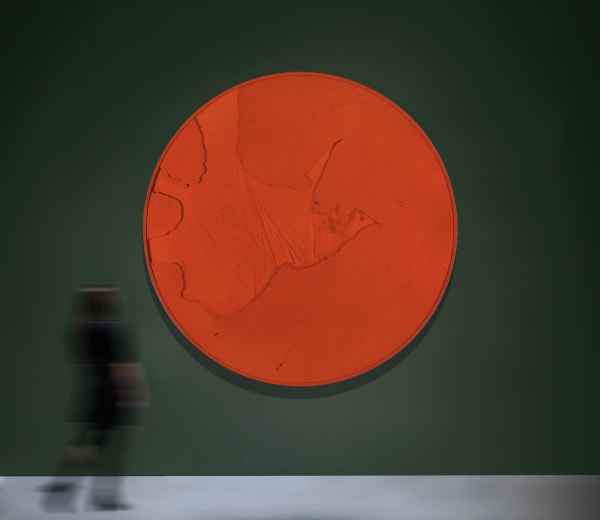
Art Miami 2024
Booth AM314, Miami, USA 3 - 8 Dec 2024Espace Meyer Zafra is pleased to present our Booth AM314 for Art Miami Fair 2024. Central to our presentation is Grazia Varisco - Schema Luminoso...Read more -
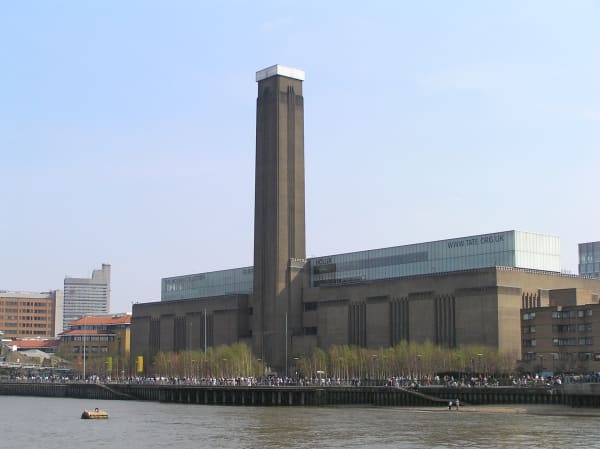
Electric Dreams. Art and technology before the internet
Tate Modern, London, UK 28 Sep 2024 - 1 Jun 2025From the birth of op art to the dawn of the internet age, artists found new ways to engage the senses and play with our...Read more -
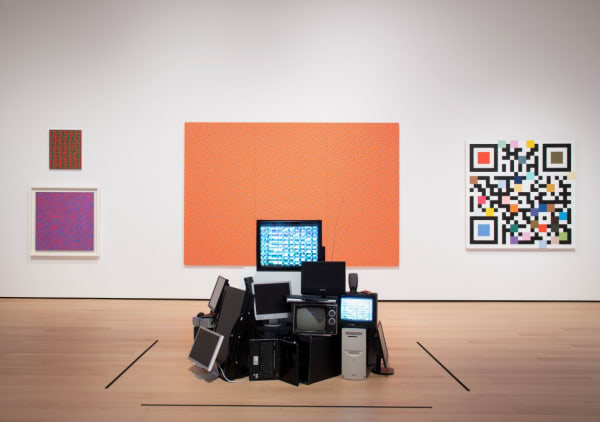
Electric Op
Buffalo AKG Art Museum, Buffalo, USA 27 Sep 2024 - 27 Jan 2025In the 1960s, electronic media began reformatting the nature of images and how we see. Unlike static paintings or sculptures, video and digital images are...Read more -

Art Miami
Miami, USA 5 - 9 Dec 2023Espace Meyer Zafra is pleased to present our Booth AM312 for Art Miami Fair 2023. Central to our presentation is Jesus Rafael Soto ’s 1994...Read more -

Mouvement et Lumière #2
Fondation Villa Datris, Isle-sur-la-Sorgue 19 May - 1 Nov 2023'10 years after our first Movement and Light exhibition in 2012 at Villa Datris, the Movement and Light 2023 exhibition is much more than a...Read more
